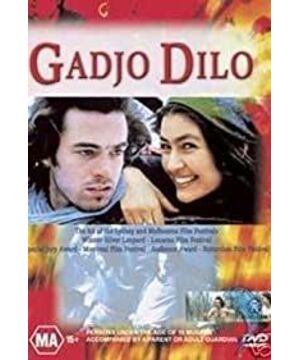As the only surviving urban nomads in modern times, Gypsies have always been free from all ethnic groups. When they wandered to Mongolia, they would be regarded as a minority by the Mongols; when they wandered to India, they would be regarded as a minority by the Punjabi; when they wandered to the Middle East, they would be regarded as a minority by the Arabs; when they arrived in Western Europe, they were even less likely to be accepted into the country. A mainstream society composed of white people with a deep sense of superiority. Wherever they go, they are all ethnic minorities, do not have their own land, and they are always struggling to survive in the cracks. They have faced survival crises again and again, and they have been squeezed out and suppressed time and time again by other ethnic groups. In the eyes of others, they are the lowest, filthy, depraved and indecent race. Their women can be abused by men of other races, and their thieves can be caught and beaten to death indiscriminately... In short, this is a nation that does not seem to exist on this planet. They can only come from one place. The fate of being driven to another place. The current survival is also a temporary survivorship derived from the tolerance of other races.
Tony Gatlif is a director with gypsy descent. As a film director who is closest to this nation by blood, he did not simply apply a personal model to the actor like other colleagues. Such as the witch holding a crystal ball, the demon-dominant belly dancer, the thief with the eyebrows and the thieves... In comparison, among all the films where Gypsies appear, Tony Gatlif’s films show the most objective aspects of this nation. Survival status. As a descendant of Gypsies, he knows what angle to look at this nation without being lame; what kind of attitude can he use to express the true mentality of the people in this group; the joys, sorrows, sorrows and joys of everyone in the camera Into his joy, anger, sorrow, and joy; a gypsy died, and his heart was cut by a knife. There is a wedding, a funeral and a mass murder in the film. In the film, some people form a happy couple, some secretly affair, some cry alone holding a bottle of bad wine, some even challenge the authority of the ruler to vent their anger, and some are burned and killed in public by mobs of other tribes. ...
Stephane, the stranger, seemed to the group of gypsy villagers to be an outsider. Because of his arrival, the village blew up like never before, and jumped everywhere. People were discussing whether to drive him out of the village at first, but Izidor's support made him stay in the end. In the process of searching for the singer Paun Milan, Stephane gradually developed a real understanding of this nation. Izidor helped him sew his already laughing sneakers, and he helped Izidor make a simple gramophone so that he could hear the records left by his dead father. With the help of the hot Sabina, he looked around for Gypsy folk artists and recorded their singing. He and Izidor attended a traditional Gypsy wedding and drove Sabina to a bar to party and throw dishes. As he got closer to this nation, he began to question his original purpose of coming here.
When Izidor's son was burned and killed by a foreign mob and burned the entire village, he and Sabina drove to report to Izidor. When he saw the old Izidor playing the violin; the belly dancer with the virgin certificate was dancing and entertaining at the table of the foreigner, a group of people at the table were applauding with amusement. In an instant, he seemed to understand his original purpose. That is: He actually treats Gypsies as a group of rare people with only acting value just like those foreigners, nothing more.
At the beginning, the driving force that drove him to this village was the tape that embodies the unique singing and dancing culture. He came only after he was moved by the song that burst into tears. And all of this was an accidental accidental pick-up by his father during his lifetime that led to this trip. Although Izidor's violin and enchanting girl's belly dance can make foreigners fascinated, these audiences are only limited to viewing them, and they will be rewarded with two small coins after the end. The personality and status of the performers have not improved slightly. After the performance, where to go back and forth. No wonder Izidor is always expressionless when performing for these wealthy people. Stephane understands the meaning of the Paun Milan song. In fact, the ballad is a collective epitome of this nation. Through this vocal, I can feel the sorrow deeply burned into the bones of this nation, and then through my own personal experience, I can understand why it is sad.
The film ends with Stephane destroying all the tapes with folk artists singing. He imitated the ritual learned at Paun Milan's funeral and buried these shredded tapes in one place, piled up a tomb with dirt, and poured strong wine on the tomb. His solo dance by the grave can be understood as a confession for the impure motives that prompted him to record these sounds, and a prayer for the future destiny of this nation.
The footage of the film has a sense of documentary, and there are very new expressions in many scenes, especially at the beginning. Because most of them are non-professional actors (including two actors who play Izidor and Sabina). Through the participation of these extras, the audience can easily feel the true temperament of a nation: easy going, naturalism, not good at Qiao decoration, and the kind of real expression of emotions and sorrows. Believe that all these can make you realize what is the real person of flesh and blood. With this film, Tony Gatlif won the Silver Bear at LOCARNO international film festival in 1997.
The music of this film uses a lot of gypsy folk music, from sadness to cheerful and lively. But the most impressive is the vocal voice on the Stephane tape.
View more about Gadjo dilo reviews








